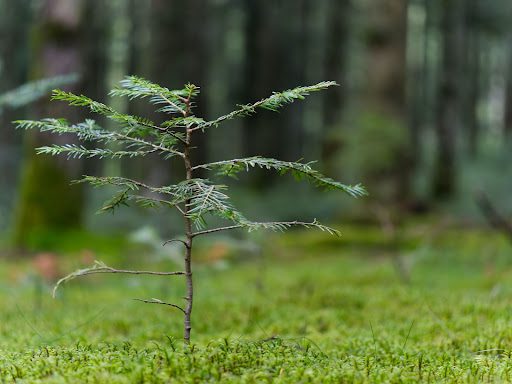One of the most important aspects of sustainable forest management is forecasting and planning the regeneration of forests after harvests. Modern forestry has a range of strategies available for modeling and executing regeneration, but the most important for New England is managed natural regeneration through seed dispersal. Let’s explore this process and why it’s so important.
What is Forest Regeneration?
Forest regeneration is the process of forests growing back after either a harvest or a natural deforestation event such as a forest fire or severe wind storm. This can be accomplished through many different means; here are the two most important today.
-
- Planting Seedlings (Manually Driven Growth)
Seedlings can be grown in a nursery and planted in affected areas to quickly regenerate forests from little or nothing. This is also an approach for starting a forest quickly in an area that hasn’t had an established forest before, and more frequently to create planned orchards or start Christmas tree farms.
- Planting Seedlings (Manually Driven Growth)
- Natural Seed Dispersal (Naturally Driven Growth)
Seed dispersal is the focus of this blog, and the natural way that forests spread, grow, and regenerate. Seeds are moved by several different means (which we will be taking a closer look at) to fertile land with room for additional trees to grow.
What is Seed Dispersal?
Put simply, seed dispersal is the process of spreading seeds from parent plants to areas where they can grow effectively. This occurs through many different specific mechanisms, but the concept is the same regardless of the specific dispersal method. This is how plants of all kinds, including all types of trees, naturally spread and repopulate. Different dispersal methods result in different degrees of spread, which determines the limits of the generational spread of plants. This is especially important for trees due to their typically longer generational cycles.
Different plants have evolved to take advantage of different types of seed dispersal due to differences in environment and plant characteristics. You can see a great example of specialized seed dispersal in plant species that evolved in areas frequently affected by forest fires. To generationally survive through forest fires, several plant species have co-opted the forest fires to activate seeds by popping tough outer sleeves and activating the seed to germinate when exposed to fire.
What Are the Types of Seed Dispersal?
As mentioned before, there are many types of seed dispersal used by flora in different environments. While some of these are more or less common for New England species, there are few enough broad seed dispersal methods available to flora, and it’s worth covering all of them to get a more complete picture of the seed dispersal process.
Seed Dispersal by Wind
This is one of the simpler and easier to observe approaches to seed dispersal. To some degree, most seeds are potentially spread by the wind; however, for plants where this strategy is a primary approach to seed dispersal, it’s virtually always essential. An iconic example of a seed specialized for this type of dispersal is the humble dandelion. Dandelion seeds have an “umbrella” shape that is specialized to ride the winds to new locales. This is a great example of how seeds can be specialized through evolution to favor a specific dispersal method. In trees, maple seeds are notably specialized to take advantage of the wind. As many children have noted with joy, maple seeds are aerodynamically shaped to whirl through the air and fall more slowly, letting the wind carry seeds farther from the parent tree.
Water
Most important for aquatic plants is dispersal by water. Many species have seeds that can float on water, allowing them to travel great distances, even if this isn’t a primary dispersal method. Most aquatic plants have specifically evolved to take advantage of the flow of water to spread. An example of this is the water lily; its fruit floats along on the surface of the water and can be carried from several feet to several miles before sinking and taking root in a stream bed. Among trees, mangroves are similarly specialized, floating along until taking root in dirt or sand at the first opportunity.
Gravity
This is the simplest approach to seed dispersal. As fruit and the seeds within become ripe for growth, the fruit becomes heavier and pulled from the plant and to the ground. This separation imparts kinetic energy that can often result in further travel away from the parent plant. Apples are an iconic example (thanks, Newton!) of gravity-based seed dispersal. Apples fall from the tree when ripe, and the round shape allows them to then roll away from the parent tree.
Ballistic
Believe it or not, some plants’ fruit literally explodes in order to spread seeds significant distances. This is achieved in a few different ways. Some plants, like witch hazel, simply shoot their seeds by squeezing them, converting the pressure into directional force thanks to the shape of the seed. Some other plants’ fruits explode due to internal tension of turgor pressure within the fruit itself. In fact, the South American sandbox tree (sometimes called the dynamite tree) has fruit that explodes with such intensity that seeds are launched up to 100 yards when ripe.
Animals
All sorts of plants primarily spread their seeds through animals. Generally, this occurs when animals eat the fruit, and the seeds survive digestion and are spread in the animals’ feces. Birds, in particular, are noted for spreading all kinds of berries and small fruit vast distances in this way. There are other ways seeds can catch a ride with animals through. Many seeds can cling to fur, feathers, or skin with hooks of velcro-like action, carrying them until they fall off (often due to grooming). Yet another method is the spread by “seed predators” that destructively feed on seeds, often hoarding seeds. When these hoards are forgotten or the hoarding animal dies, these hoards translate into major opportunities for growth away from the parent plant.
How Does This Matter to Forest Management?
In sustainable forest management, we need to project regeneration rates of trees to understand how many trees and of what species can be harvested at a time and how often without diminishing the forest being harvested. This can also be applied to understanding the rate at which a specific species can be spread.
This type of information and modeled projection matters a lot when trying to convert existing timberland to a new dominant tree variety. This is how you can specialize your woodlot to be more valuable per acre by growing specific timber species.
How Tall Pines Forest Management Can Help
To help plan your woodlot’s regeneration, reach out to the forestry professionals at Tall Pines Forest Management. We can help you develop a forest management plan that will maximize the recovery and regeneration of your forest thanks to our advanced understanding and experience with the natural regeneration of trees in Maine and New Hampshire.


0 Comments